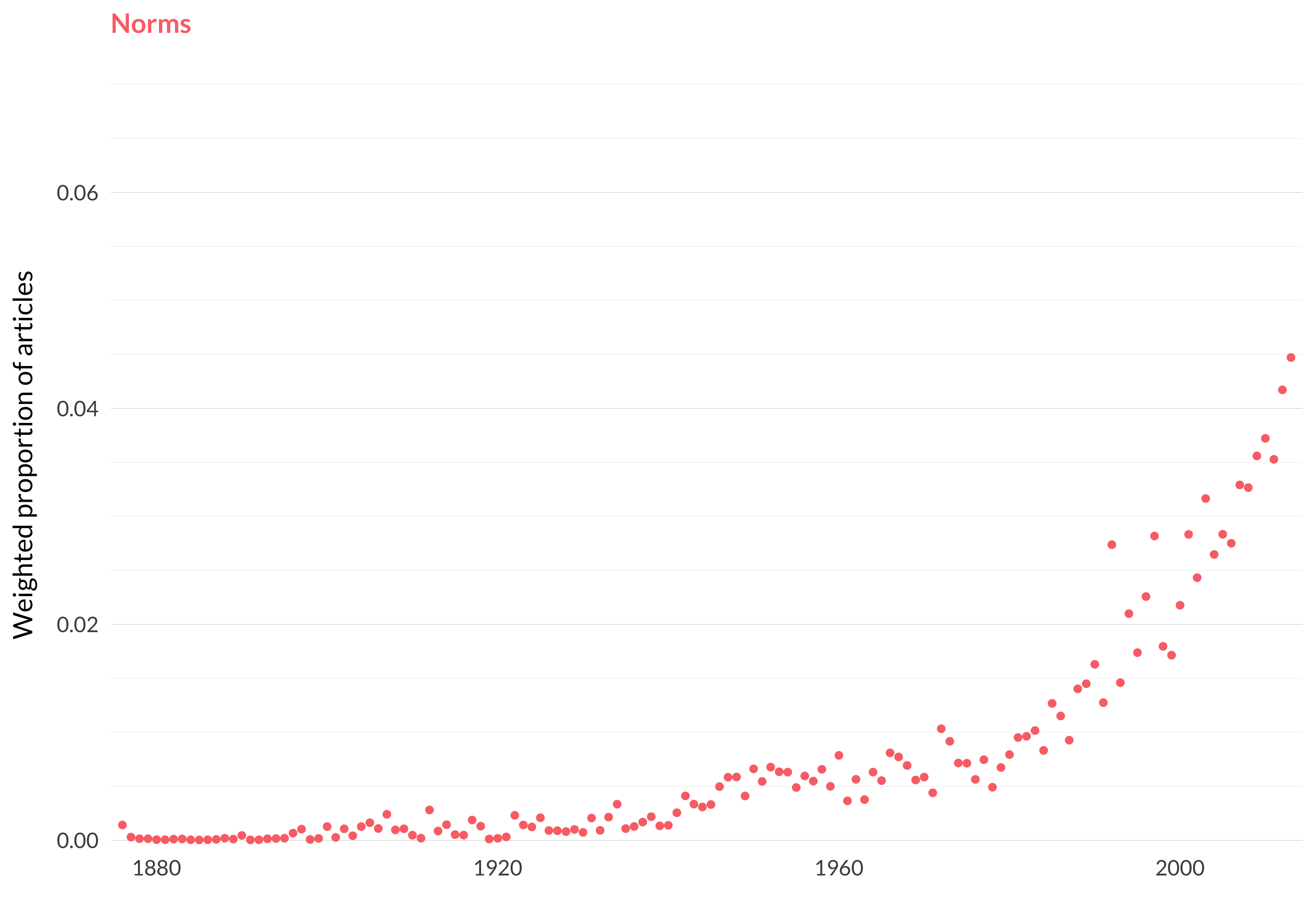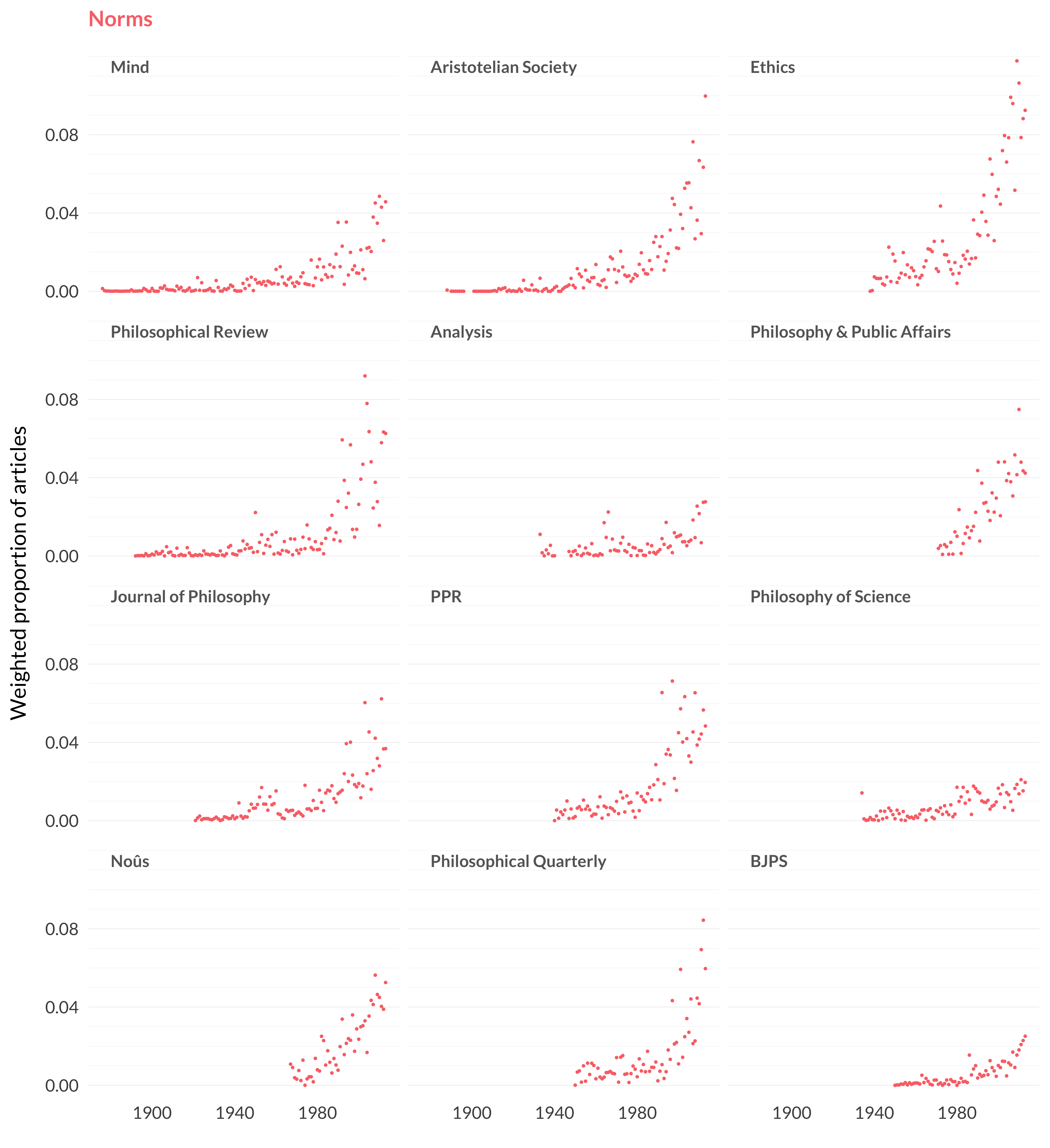2.90 Norms
Category: Philosophy of Language/Ethics
Keywords: norm, norms, commitments, normative, commitment, practices, constitutive, disagreement, attitudes, challenge, attitude, worry, concerns, practice, acceptance
Number of Articles: 272
Percentage of Total: 0.8%
Rank: 58th
Weighted Number of Articles: 394.4
Percentage of Total: 1.2%
Rank: 26th
Mean Publication Year: 1998.2
Weighted Mean Publication Year: 1992.6
Median Publication Year: 2003
Modal Publication Year: 2003
Topic with Most Overlap: Ordinary Language (0.0593)
Topic this Overlaps Most With: Reasons (0.04)
Topic with Least Overlap: Early Modern (0.00045)
Topic this Overlaps Least With: Psychology (5e-04)

Figure 2.206: Norms.

Figure 2.207: Norms articles in each journal.
Comments
Our last topic has a heavily midwestern flavou. It is largely about normativity and objectivity. And the two figures most central to it are Robert Brandom and Allan Gibbard.
I’m not going to say much about this here because I’ll be talking more about it at the end of the book in section 9.3. And the big theme there will be that very strange things started happening to this topic when I ran more and more refinements on the model. In particular, it started to track the distinctive vocabulary of contemporary philosophy, the fashionable buzzwords, rather than anything about content.
It’s somewhat clear how this happened. The topic is very contemporary. Explicit discussion of “norms” is a recent phenomenon, and Brandom and Gibbard are very much figures of late twentieth- and early twenty-first-century philosophy. Moreover, one of the actual topics discussed here is commitments. But “commitment” is also something of a buzzword; talking about the “commitments of an account” rather than the “consequences of a theory” is a way to mark one’s philosophical writing as being up to date with modern terminology. But the model can’t tell the difference between the topic of commitments and the stylistic word choice of “commitments”. So the model broke when pushed too hard.
But that hasn’t happened in the model being discussed here. Instead the topic is modern in a more pleasing way. It, like much work in the 2010s, breaks down the familiar philosophical categories. This topic is partially about ethics but just as much about philosophy of language. From the 1960s to the 1990s those topics didn’t have much overlap, and it’s pleasing to see that they are being joined back up here. The study ends too soon to capture the boom in work in ethics and epistemology in the 2010s, though this topic picks up a little of that in papers like “Doxastic Deliberation”. These papers that cut across traditional topics make my job harder, but they make philosophy so much more interesting.